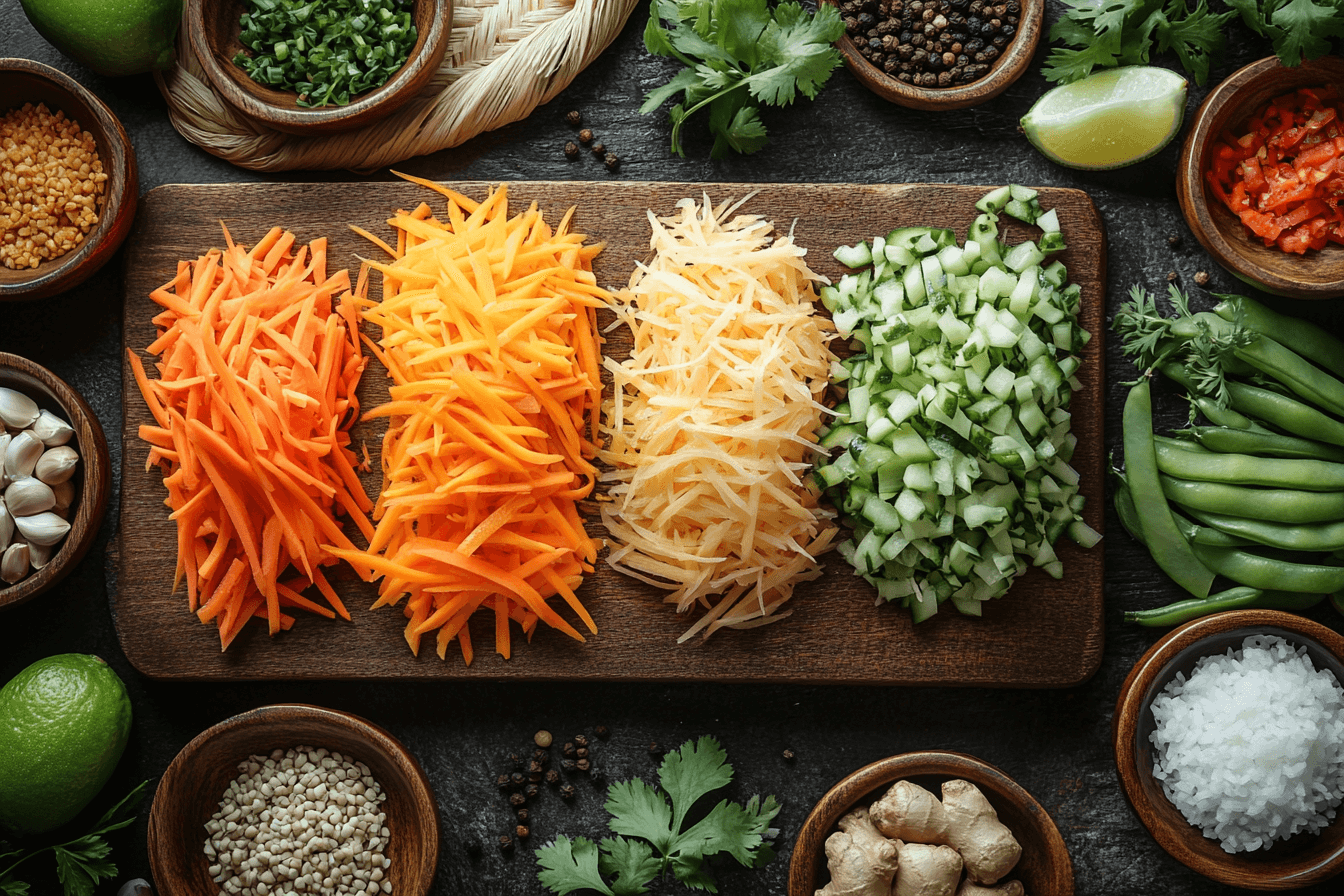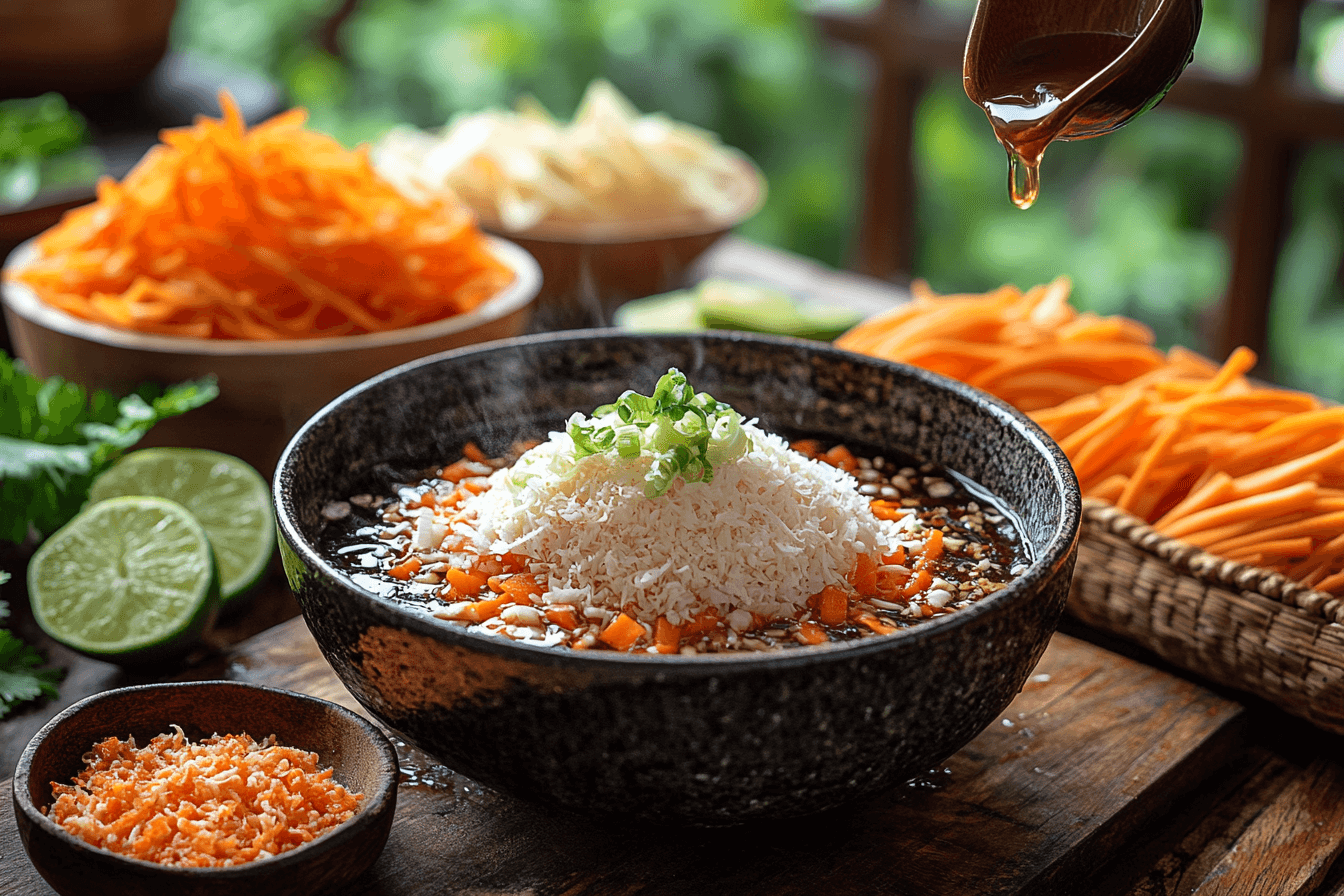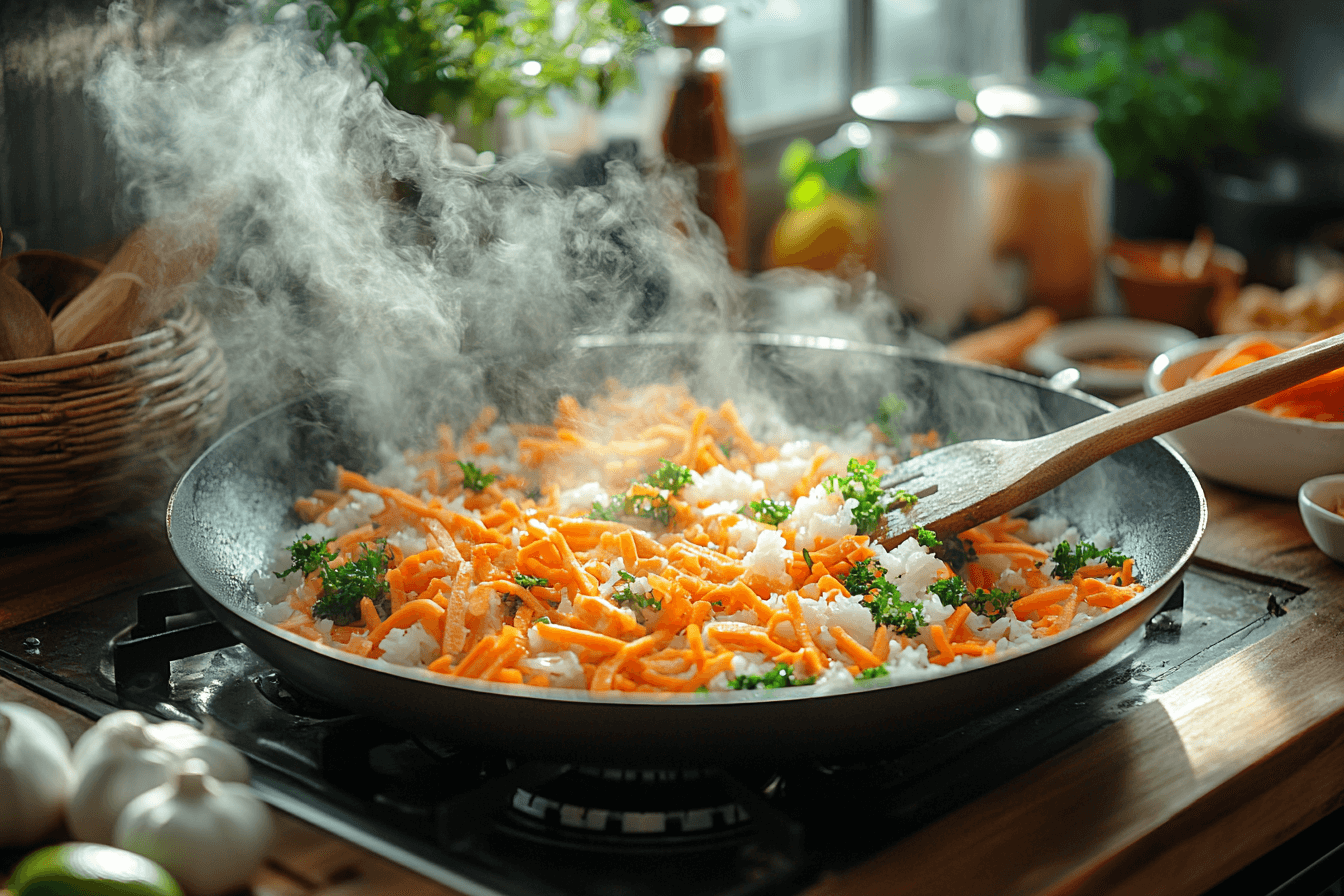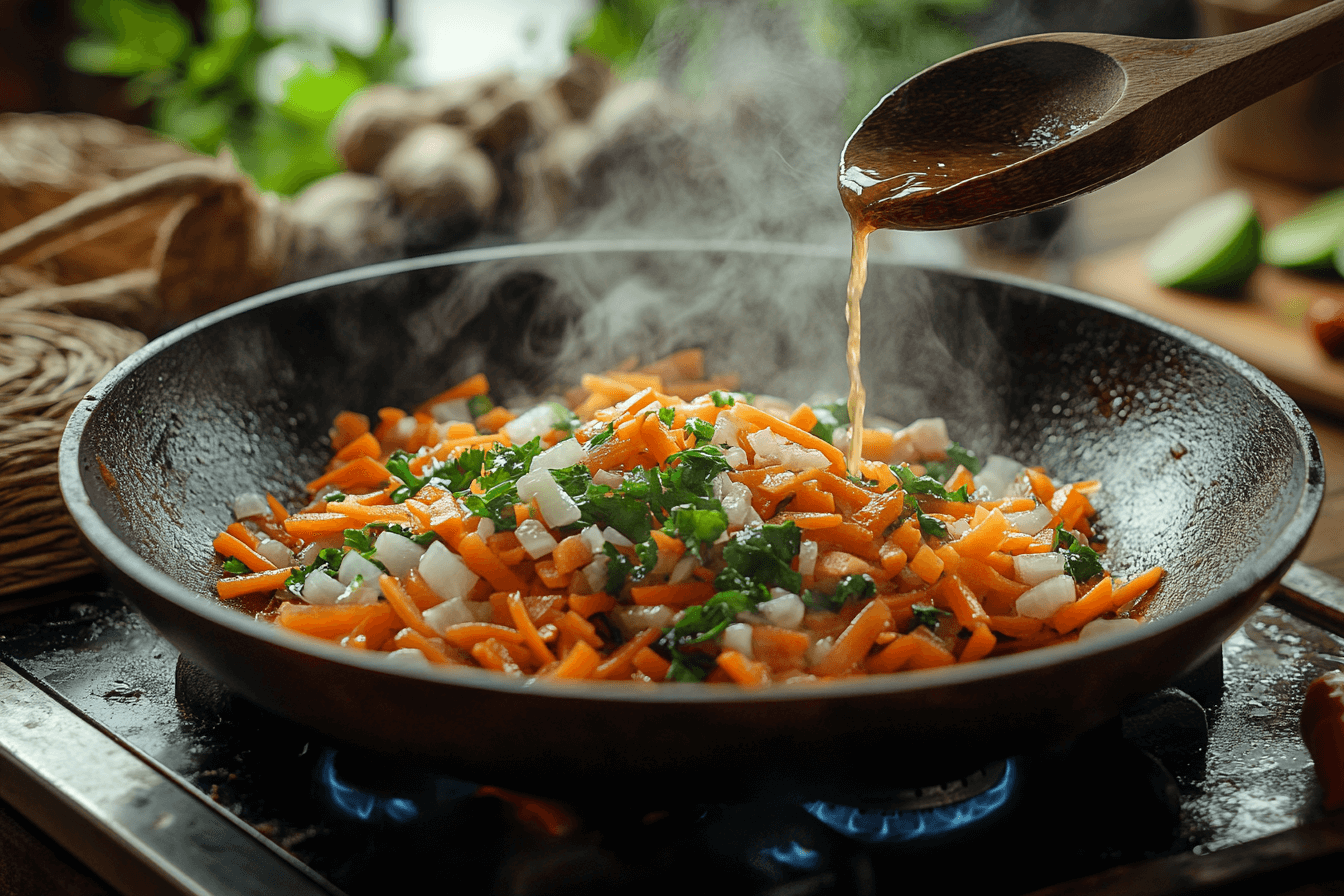Easy Simmered Dried Daikon Recipe for Families Visiting Bali
Looking for a simple and nutritious dish to prepare while in Bali?
This simmered dried daikon recipe combines the essence of Japanese home cooking with a Balinese twist.
Perfect for families traveling with kids, it’s healthy, easy to prepare, and a delightful addition to any meal.
Table of Contents
What is Simmered Dried Daikon?
Simmered dried daikon, or kiriboshi daikon, is a traditional Japanese dish made from sun-dried radish strips.
This Bali-inspired version adds a tropical twist with local spices and ingredients, making it a flavorful and nutritious side dish.
Balinese Inspiration for Dried Daikon
Incorporating Balinese ingredients like coconut milk and kecap manis into the traditional simmered daikon recipe creates a rich and unique flavor profile.
The result is a fusion dish that pairs beautifully with steamed rice or Balinese nasi kuning.
Ingredients for Kid-Friendly Simmered Dried Daikon
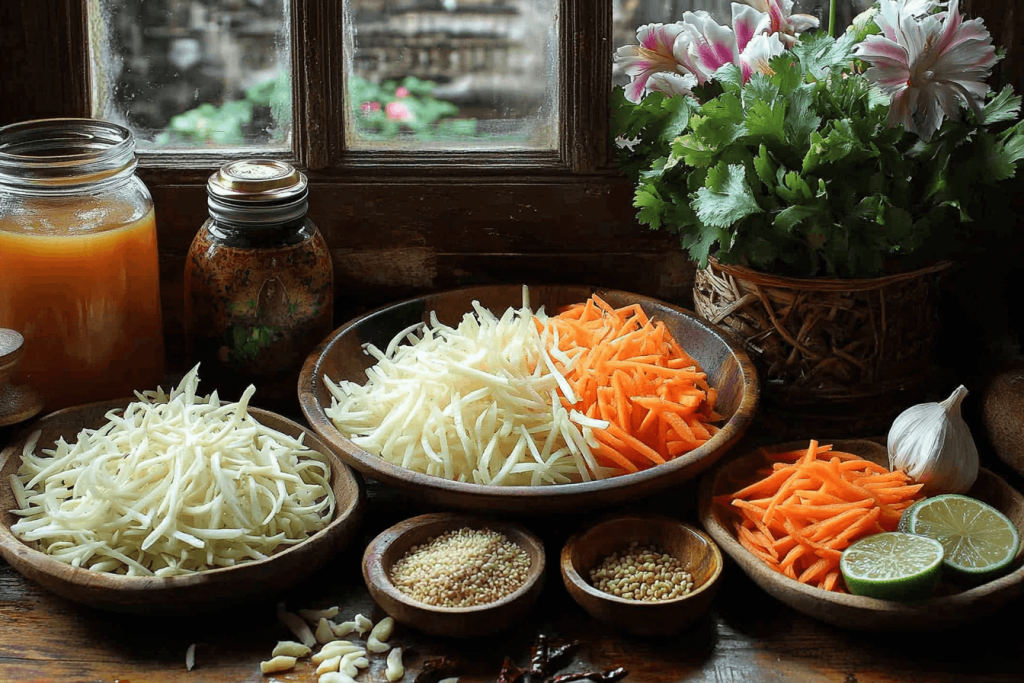
25g dried daikon strips, soaked and drained
1 medium carrot, julienned
1 tablespoon coconut oil
2 tablespoons soy sauce
1 tablespoon kecap manis (sweet soy sauce)
½ teaspoon grated ginger
1 clove garlic, minced
1 cup vegetable or chicken broth
1 tablespoon Balinese lime juice
Optional garnish: toasted sesame seeds or fried shallots
Step-by-Step Guide to Cooking Simmered Dried Daikon
Rehydrate the Dried Daikon:
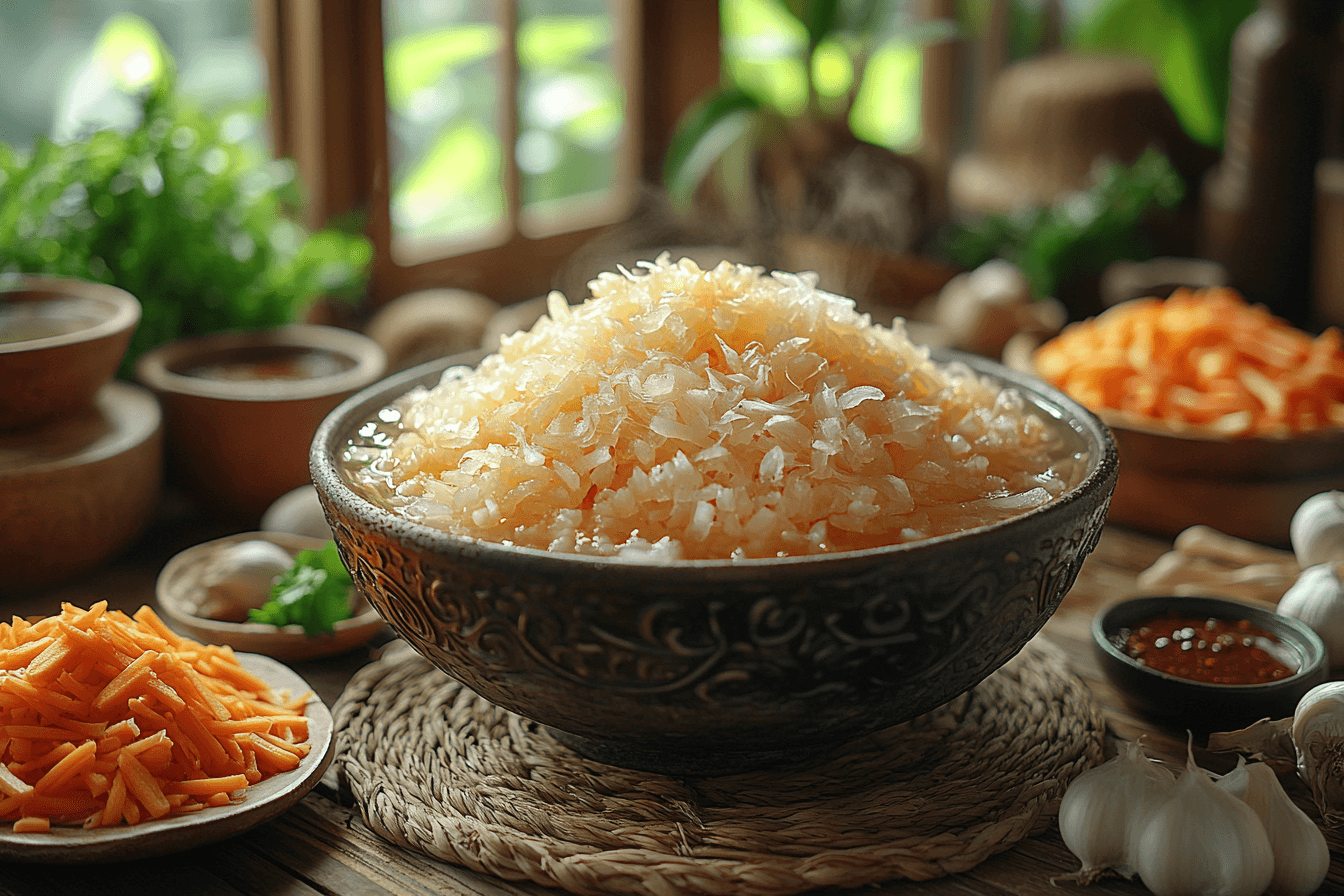
Drain the water, then squeeze the daikon gently to remove excess moisture.
Slice the Vegetables:
Julienne the carrot into thin matchstick pieces for uniform cooking.
Prepare any additional vegetables, such as green beans or bell peppers, for added color and texture.
Prepare the Sauce:
In a small bowl, whisk together soy sauce, kecap manis, coconut milk, grated ginger, minced garlic, and Balinese lime juice.
Adjust the proportions to balance sweetness, saltiness, and acidity according to your taste preferences.
Sauce the Daikon and Vegetables:
Heat coconut oil in a large skillet or wok over medium heat.
Add the rehydrated daikon and carrots, and sauté for 2–3 minutes until lightly browned and coated with oil.
Add the Sauce and Broth:
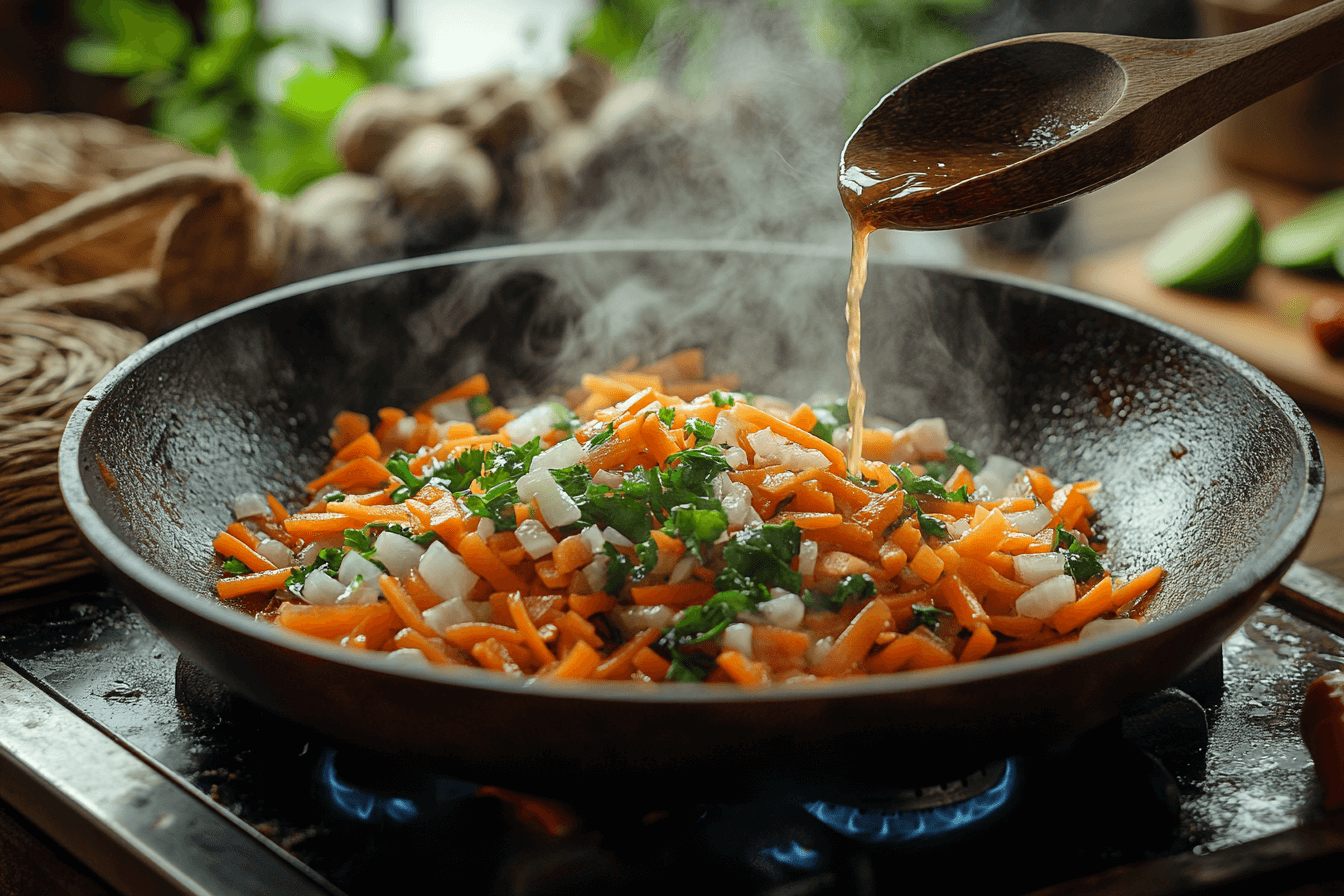
Stir to combine all the ingredients evenly, ensuring the daikon and carrots are fully submerged.
Simmer and Reduce:
Lower the heat to a gentle simmer. Cover the skillet with a lid and cook for 10–15 minutes, stirring occasionally to ensure even cooking.
Remove the lid during the final 2–3 minutes to allow the sauce to thicken.
Finish and Serve:
Once the daikon is tender and the sauce has a slightly glossy consistency, transfer the mixture to a serving dish.
Garnish with toasted sesame seeds or fried shallots for an added layer of texture and flavor.
Serve warm alongside steamed jasmine rice or nasi kuning.
Tips for Serving Bali-Style Dried Daikon
Balinese Plating Techniques: Serve the dish in a banana leaf-lined bowl or a coconut shell for a traditional and eco-friendly presentation. Add a small side of sambal matah for adults who enjoy a spicy kick.
Enhance the Tropical Flavors: Add a pinch of turmeric or freshly grated galangal to the sauce to deepen the Balinese flavor profile. A drizzle of coconut cream can also add richness to the dish.
Kid-Friendly Adjustments: Increase the amount of kecap manis for a sweeter and more appealing flavor for children. Reduce or omit the ginger for a milder taste.
Make it a Complete Meal: Pair the daikon with gado-gado (Balinese vegetable salad) or fried tempeh to create a balanced and nutritious meal.
Texture Tips: Ensure the dried daikon is thoroughly soaked and squeezed before cooking to achieve a tender yet slightly chewy texture. Avoid overcooking the carrots to maintain a pleasant crunch.
Garnishing Like a Pro: Top the dish with finely chopped cilantro or lime wedges to enhance both visual appeal and flavor. Fried shallots add a savory crunch that complements the dish beautifully.
Nutrition Facts for Simmered Dried Daikon Recipe
Calories
120 kcal
Fat
6g (2g saturated fat)
Cholesterol
0mg
Sodium
350mg
Carbohydrates
12g (4g sugars, 3g fiber)
Protein
2g
FAQs About Making Dried Daikon in Bali
Q1: Can I substitute dried daikon with fresh daikon?
A: Yes, fresh daikon can be used, but it lacks the concentrated flavor of dried daikon. Adjust the cooking time to ensure it softens properly.
Q2: Where can I find dried daikon in Bali?
A: Look for dried daikon in specialty Asian grocery stores or large supermarkets like Carrefour and Pepito. Traditional markets may also carry it.
Q3: How do I store leftovers in Bali’s tropical climate?
A: Store leftovers in an airtight container in the refrigerator and consume within 24–48 hours. Reheat gently on the stovetop to maintain the texture.
Q4: Can I make this dish vegan?
A: Absolutely! Use vegetable broth instead of chicken broth and ensure the soy sauce and kecap manis are vegan-certified.
Q5: What side dishes pair well with this recipe?
A: Serve the daikon with steamed jasmine rice, nasi kuning, or a cucumber salad for a refreshing contrast.
Q6: How can I make this dish spicier?
A: Add sambal matah or a pinch of chili flakes to the sauce for a spicy kick that complements the sweetness of kecap manis.
Q7: Can I add other vegetables to this dish?
A: Yes, green beans, snap peas, or bell peppers make excellent additions to enhance the flavor and nutritional value.
Q8: How can I adjust the sweetness of the sauce?
A: Increase or decrease the amount of kecap manis based on your preference. Adding a teaspoon of palm sugar can also enhance the sweetness.


